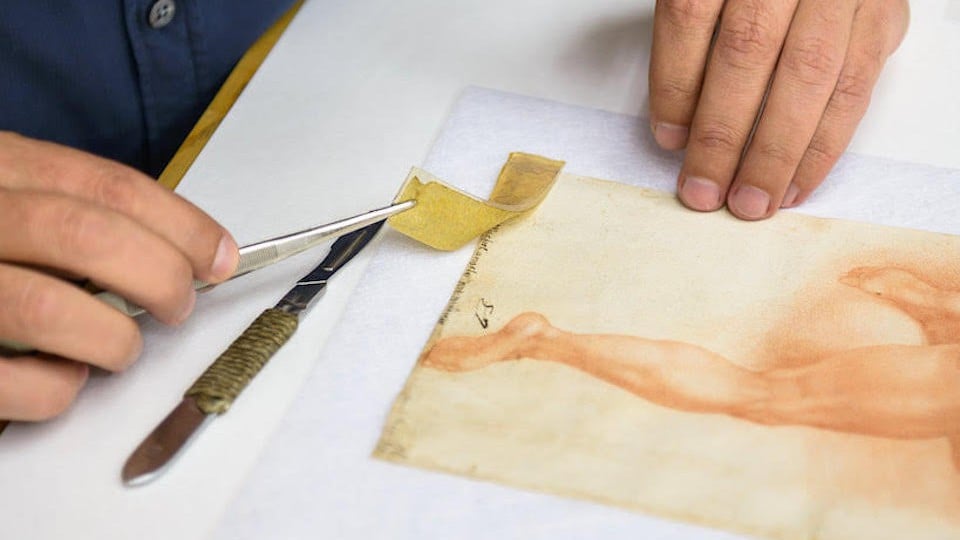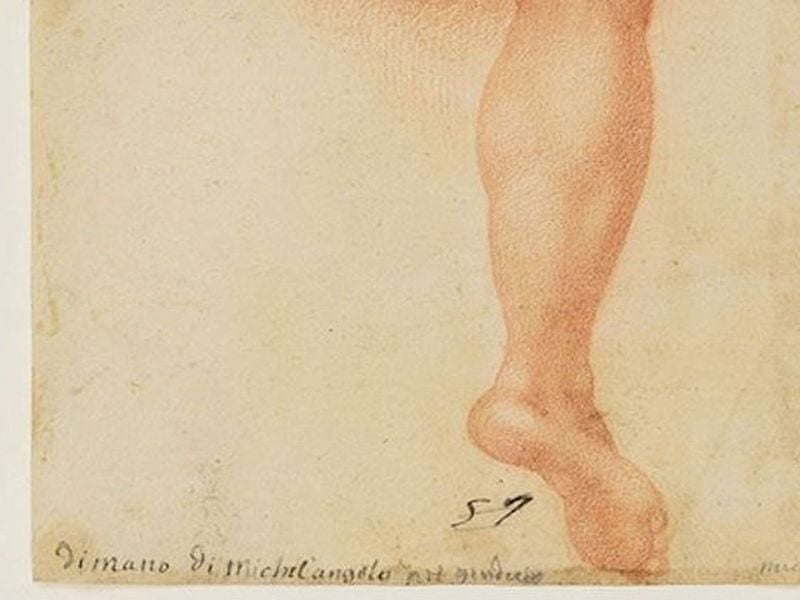Art World
A New Technique for Removing Tape From Artworks May Have Led to the Discovery of a Michelangelo Drawing
Scientists at the University of Florence found a clue to the origin of a 16th-century drawing underneath a piece of tape.

Scientists at the University of Florence found a clue to the origin of a 16th-century drawing underneath a piece of tape.

Taylor Dafoe

The world of art restoration moves a bit slower than others. You know this is the case when a new method for removing tape from prints and drawings makes news.
But here we are. This week, a group researchers at the University of Florence published a study through the Proceedings of the National Academy of Sciences detailing the innovative new technique, which employs a water-retentive hydrogel with nano-sized droplets of organic solvents to remove old pieces of pressure-sensitive tape (known as PSTs) without damaging the substrate underneath. The emulsion slowly penetrates the surface and softens the adhesive underneath without touching the paper. Simply apply the gel to the top of tape, trim it down to size, then peel both off.
The development is bigger than it sounds. Tape, it turns out, is a nightmare for restorers. For one, it’s used for wide variety of purposes, including matting, temporary conservation, or simply to adhere or fasten the work to another object. It’s also nearly impossible to remove without compromising the integrity of the paper underneath—a problem that only gets worse with age.

Detail of a 16th-century drawing with an inscription attributing the work to Michelangelo. Courtesy of the Proceedings of the National Academy of Sciences.
This is why a non-invasive removal method is a game-changer.
So far, the scientists have restored tape-damaged drawings by Maria Helena Vieira da Silva, Stanley William Hayter, and Lucio Fontana, among others. But their biggest coup came when they were successfully able to remove a piece of tape stuck to a 16th-century drawing from the Sistine Chapel. Underneath, they discovered the inscription, “di mano di Michelangelo” (“from Michelangelo’s hand”).
Whether or not the drawing was indeed by Michelangelo is still uncertain; the work is still being investigated by authenticators (and some early reports suggest the signature was erroneously written by a collector after the fact). Nevertheless, it’s hard to deny the potential impact of the new technique.